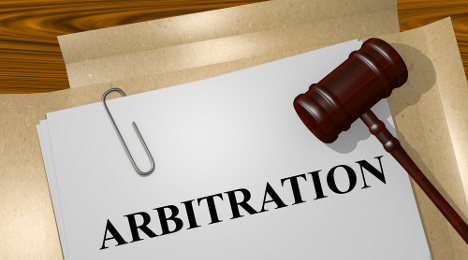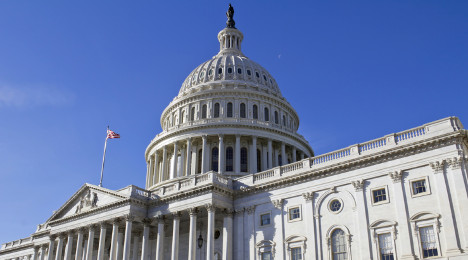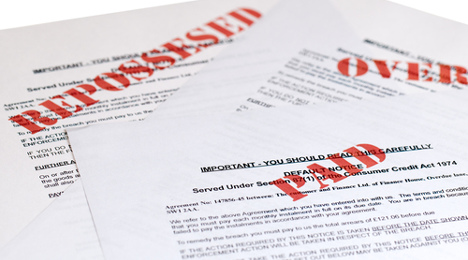As the regulator handed out a $100 million penalty to Wells Fargo for activities not related to auto financing, the Consumer Financial Protection Bureau noted that the amount of complaints in its database continues to surge toward 1 million entries.
As of Aug. 1, the bureau reported that it has handled approximately 954,400 total complaints across all products. When SubPrime Auto Finance News dug into the CFPB’s searchable complaint database to get a sense of auto financing status, we found statistics that might give finance company executives some assurance about their performance.
The searchable database — which often contains consumer comments as well as the particular company connected to the complaint — has a total of 627,536 entries dating back to Dec. 1, 2011. When selecting auto as a subcategory, the database shows just 16,886 entries, which include both complaints from consumers who currently have a vehicle installment contract or lease as well as issues associated with debt collections in the auto space.
So after doing some quick arithmetic, the auto finance space constitutes just 2.69 percent of the complaints in the CFPB’s searchable database.
For comparison, the CFPB’s latest complaint database update highlighted the bureau’s data involving bank accounts and services. As of Aug. 1, the bureau said it had handled approximately 94,200 bank account or service complaints. That ratio comes in at 9.87 percent.
The CFPB indicated that what triggers the most complaints from consumers about their bank includes issues such as trouble opening accounts, problems with overdraft fees and availability of funds and frustration about financial institutions’ error resolution procedures.
“Deposit accounts are an essential component of millions of consumers’ financial lives,” CFPB director Richard Cordray said. “We are concerned that consumers continue to face difficulties accessing and managing this cornerstone financial tool.
“Consumers who are eligible for a deposit account should be able to get one and use it effectively,” continued Cordray, who pointed out that Bank of America, JPMorgan Chase, Wells Fargo and Citibank were the four companies about which the CFPB has received the most bank account or service related complaints.
CFPB’s action against Wells Fargo
And speaking of Wells Fargo, this week the CFPB fined the bank $100 million for what the regulator deemed to be “widespread illegal practice of secretly opening unauthorized deposit and credit card accounts.”
Spurred by sales targets and compensation incentives, the bureau said employees boosted sales figures by “covertly” opening accounts and funding them by transferring funds from consumers’ authorized accounts without their knowledge or consent, often racking up fees or other charges.
According to the bank’s own analysis, the CFPB found employees opened more than 2 million deposit and credit card accounts that may not have been authorized by consumers.
Officials said Wells Fargo will pay full restitution to all victims and a $100 million fine to the CFPB’s Civil Penalty Fund. The bank will also pay an additional $35 million penalty to the Office of the Comptroller of the Currency, and another $50 million to the City and County of Los Angeles.
“Wells Fargo employees secretly opened unauthorized accounts to hit sales targets and receive bonuses,” Cordray said. “Because of the severity of these violations, Wells Fargo is paying the largest penalty the CFPB has ever imposed.
“Today’s action should serve notice to the entire industry that financial incentive programs, if not monitored carefully, carry serious risks that can have serious legal consequences,” he added.
In response, Wells Fargo insisted that its commitment to addressing the concerns covered by agreements with regulators included:
—An extensive review by a third party consulting firm going back into 2011, which was completed prior to these settlements. The review included consumer and small business retail banking deposit accounts and unsecured credit cards opened during the period reviewed.
—As a result of this review, $2.6 million has been refunded to customers for any fees associated with products customers received that they may not have requested. The bank said accounts refunded represented a fraction of 1 percent of the accounts reviewed, and refunds averaged $25.
—Disciplinary actions, including terminations of managers and team members who acted counter to values.
—Investments in enhanced team-member training and monitoring and controls.
—Strengthened performance measures that are tied to customer satisfaction, loyalty and ethics.
Sending customers a confirming email within one hour of opening any deposit account, and sending an application acknowledgement and decision status letter after submitting an application for a credit card.
“Wells Fargo reached these agreements consistent with our commitment to customers and in the interest of putting this matter behind us. Wells Fargo is committed to putting our customers’ interests first 100 percent of the time, and we regret and take responsibility for any instances where customers may have received a product that they did not request,” the company said.
“Our entire culture is centered on doing what is right for our customers. However, at Wells Fargo, when we make mistakes, we are open about it, we take responsibility, and we take action. Today’s agreements are consistent with these beliefs,” the company went on to say.
More action on Capitol Hill
As lawmakers get back to work following the annual summer recess, U.S. House Financial Services Committee Chairman Jeb Hensarling, a Texas Republican, announced that the committee will begin meeting on Tuesday to debate the Financial CHOICE Act, consider possible amendments and vote on the legislation.
Earlier this summer, Hensarling unveiled the Financial CHOICE Act, what’s being dubbed the Republican alternative to the Dodd-Frank Act, which created the CFPB.
As highlighted in this previous report from SubPrime Auto Finance News, Hensarling stressed his proposal “will end taxpayer-funded bailouts of large financial institutions, relieve banks that elect to be strongly capitalized from growth-strangling regulation that slows the economy and harms consumers, impose tougher penalties on those who commit financial fraud and demand greater accountability from Washington regulators.”
The American Action Forum (AAF) shared analysis this week that might provide more tangible evidence to fuel opponents of the Consumer Financial Protection Bureau.
AAF, which claims to be an independent, nonprofit organization not affiliated with or controlled by any political group, found that CFPB rulemakings have moved 3.5 times faster than regulations from cabinet agencies.
According to commentary compiled by AAF director of regulatory policy Sam Batkins, “More troubling is the amount of public notice for some of these rules. In 18 instances, a final rule was published before it had been released in the Unified Agenda, amounting to 36 percent of the agency’s rulemaking slate.
“For critics of CFPB who had concerns about the agency’s rulemaking authority and accountability, its pace should offer a fresh set of issues,” Batkins added.
Based on the most recent Unified Agenda of Federal Regulations, Batkins determined the bureau has finalized 49 rules. But he noticed just 26 of those measures have imposed $2.8 billion in costs with an associated 16.9 million paperwork burden hours.
“For perspective, it would take 8,450 employees working full time (2,000 hours) to complete the agency’s new recordkeeping and reporting requirements,” Batkins said.
AAF’s analysis showed the average CFPB rule takes just 197 days to complete — from initial publication in the Unified Agenda to final publication in the Federal Register. The organization indicated the median time is even shorter at just 114 days.
“Although some claim that CFPB rules are actually taking too long to complete, these analyses have proven to be rather arbitrary; adding 90 days to these figures only raises the average to 287 days and the median to 204 days, still well less than a year for the rulemaking life,” Batkins said.
Although agencies likely begin work on rules before entry in the Unified Agenda, Batkins pointed out regulators are also likely to conclude work before official publication in the Federal Register.
The American Action Forum has documented the phenomenon of publication delay in the past: Agencies finish a rulemaking and publish a version online, but Federal Register publication, through the public inspection docket or otherwise, can sometimes lag for up to six months.
Batkins mentioned some CFPB rules wait up to 41 days for formal publication. “Even with these bureaucratic publication delays, the average CFPB rule still moves far faster than the average cabinet agency rulemaking,” he said.
U.S. Government Accountability Office records show just seven major CFPB rulemakings and the connected averages that are lengthier than the total sample AAF reviewed. Batkins stressed that group was “hardly proceeding at a snail’s pace: 326 days.” He computed the median time is higher at 408 days.
“However, one of these major rules — Operations in Rural Areas Under the Truth in Lending Act — was released 53 days before initial publication in the Federal Register,” Batkins said. “It was issued without a proposed rule to allow the public and members of Congress to comment.”
What might be most noteworthy to auto finance companies and CFPB opponents is the rate of regulatory errors the bureau might be generating.
“These relatively short rulemaking timelines have generated a fair share of mistakes,” said Batkins, who found that the CFPB has had to issue 13 corrections, comprising 57 pages in the Federal Register.
“This amounts to an ‘error rate’ in the agency’s regulatory slate of roughly 25 percent,” he continued. “Three of these rules that later required corrections were published as final rules in the Federal Register before official publication in the Unified Agenda, one by 121 days.
“In fact, of the 49 rules included in the sample, 18 (or 36 percent of the total) were published as final rules before the public learned of them in the Unified Agenda,” he added. “In one instance, CFPB published a final rule more than 411 days before notice in the agenda.
“With all deference to the agency, excluding these ‘premature’ rulemakings still yields an average length of 376 days, well ahead of the average economically significant rulemaking from a cabinet-level agency,” Batkins went on to say.
Batkins’ original online post can be found here.
As the American Financial Services Association scheduled an informational webinar with executive vice president Bill Himpler, organizers of the National Automotive Finance Association’s Consumer Credit Compliance Certification Program reminded potential participants about the upcoming deadline for discounted accommodations.
In an effort to help finance companies and other stakeholders in the industry tackle the increasingly difficult challenge of complying with federal and state regulatory requirements, the Certification Program is designed to provide the compliance professional with a solid working knowledge of the federal laws and regulations that govern consumer credit, together with a representative overview of state consumer credit law.
The program consists of four modules — two presented through an in-person classroom setting and two in an online format at the student’s own pace. Each module includes multiple sessions, and each session provides a thorough outline and description of the applicable law or regulation. Each session is followed by an online test that must be passed to receive credit for the session.
NAF Association officials are organizing another opening in-person module just as autumn arrives. The session is set for Sept. 22 and 23 at Dallas/Plano Marriott at Legacy Towne Center in Plano, Texas. NAF Association is taking reservations for that module here.
Discounted rooms are available, but reservations must be made by Thursday.
And the NAF Association is hosting the closing module at the same site as the SubPrime Forum and Used Car Week, the Red Rock Resort and Casino in Las Vegas on Nov. 14-18. Program participants who have completed the first three modules can register for the closing segment here.
AFSA webinar about future CFPB moves
Meanwhile, AFSA’s Himpler is hosting a webinar titled “What to expect from the Consumer Financial Protection Bureau.” It’s scheduled to begin at 2 p.m. EDT on Sept. 21.
Along with a Q&A section, Himpler plans to address four pressing issues during the webinar:
• What the Military Lending Act means to you.
• Interpreting the new CFPB rules on small-dollar lending.
• Do you need to be sending customer statements?
• Where will the CFPB go next?
Registration for the webinar can be completed here.
One of the noteworthy quotes from those old Bugs Bunny cartoons that involved Marvin the Martian included the phrase, “Well, back to the old drawing board.”
That phrase also summarized the sentiment the American Bankers Association, the Consumer Bankers Association and the Financial Services Roundtable emphasized when they crafted and submitted a 42-page rebuttal for the Consumer Financial Protection Bureau regarding its proposal associated with arbitration.
Back in May, the CFPB released its proposed rules that would prohibit mandatory arbitration clauses that the bureau said denies groups of consumers “their day in court.” Compliance experts from ABA, CBA and the Financial Services Roundtable retorted that “day in court” doesn’t provide the remedies CFPB officials claim.
“The proposed rule does not benefit society or consumers,” the groups said in the letter that’s available here. “Both lose because, as taxpayers, consumers will have to pay for additional resources needed by courts to accommodate the permanent influx of 6,042 additional class actions every five years. They lose because the cost of defending and settling cases — estimated to be between $2.62 billion and $5.23 billion every five years (100 additional lawsuits each month) — will be passed along to consumers in whole or in part in the form of higher prices or reduced services.
“Finally, they lose because, in exchange for waiting years to recover an average of $32.35, they lose all of the benefits of arbitration — benefits that the bureau itself touts to its own employees and expressly acknowledges in the proposed rule,” the groups continued.
“These unrecognized social costs do not serve the public interest or protect consumers. It is not in the public interest to have a judicial system that is overburdened with unproductive class actions that return little or nothing to consumers but generate billions of dollars for their lawyers,” they went on to say.
The rebuttal was signed by:
—Nessa Feddis, vice president and senior counsel at the ABA’s Center for Regulatory Compliance
—Steven Zeisel, the CBA’s executive vice president and general counsel
—Richard Foster, senior vice president & senior counsel for regulatory and legal affairs at the Financial Services Roundtable
This trio stressed consumers are not protected if they pay more for financial services and lose the convenience, low cost and efficiency of arbitration, especially for “non-classable” claims that class actions cannot address.
“Moreover, banning class action waivers is not necessary to address concerns related to resolving small dollar claims and harms about which people will be unaware. Nor is it necessary to regulate or modify corporate behavior,” they wrote.
“These matters are addressed through a variety of other means, including internal corporate compliant processes, the complaint portals of the bureau and other government agencies, public opinion and social media, and through the tools for remedial action available to dozens of government agencies, including the Bureau, which have aggressively used their enforcement authority,” they added.
Feddis, Zeisel and Foster made one other point, stating that the CFPB failed to consider alternatives, as the Dodd-Frank Act requires, that would address the need for a ban of class action waivers.
“The bureau should, for example, allow the enforcement of class action waivers for matters that the entity has identified and resolved prior to a class action being filed. It should also allow enforcement of class action waivers where consumer protection statutes provide greater relief for plaintiffs who pursue individual actions rather than class actions,” they said.
The groups made a wide array of arguments as to why arbitration is much more efficient for both consumers and financial services providers.
“The proposed rule should not be made final because it is not in the public interest, it does not and is not needed to protect consumers, and it is not consistent with the (CFPB’s study), all of which are prerequisites for adopting such a rule,” they said. “Nor did the bureau, as required, consider alternatives such as allowing enforcement of class action waivers for matters that the entity has identified and resolved prior to a class action being filed.
“Moreover, numerous important issues — including consumer satisfaction with arbitration, the impact on consumers if companies abandon arbitration, the cost to consumers of 6,042 additional class actions, alternative arbitration terms and the impact of arbitration education — have yet to be studied,” they went on to say.
Representatives from six different captive finance companies, two other institutions at or near the top of quarterly market share rankings as well as dealerships and other service providers are among the 89 members of the spring 2016 graduating class that successfully completed the National Automotive Finance Association’s Consumer Credit Compliance Certification Program.
With another graduating class expected to finish its work during Used Car Week, the NAF Association offers the Consumer Credit Compliance Certification Program to help finance companies and other stakeholders in the industry tackle the increasingly difficult challenge of complying with federal and state regulatory requirements.
The Certification Program is designed to provide the compliance professional with a solid working knowledge of the federal laws and regulations that govern consumer credit, together with a representative overview of state consumer credit law.
The program consists of four modules — two presented through an in-person classroom setting and two in an online format at the student’s own pace. Each module includes multiple sessions and each session provides a thorough outline and description of the applicable law or regulation. Each session is followed by an online test that must be passed to receive credit for the session.
NAF Association officials are organizing another opening in-person module just as autumn arrives. The session is set for Sept. 22 and 23 at Dallas/Plano Marriott at Legacy Towne Center in Plano, Texas. NAF Association is taking reservations for that module here.
And the NAF Association is hosting the closing module at the same site as the SubPrime Forum and Used Car Week, the Red Rock Resort and Casino in Las Vegas on Nov. 14-18. Program participants who have completed the first three modules can register for the closing segment here.
Here is the rundown of the 89 industry professionals who just completed their compliance training:
Brett Odom, Allied Solutions
Tasha Todd-Miller, American Credit Acceptance
Vonya Bickford, American Credit Acceptance
Robert Wu, American Honda Finance Corp.
Amy Mullins, Auto Credit of Southern Illinois
Jeremy Redeker, Auto Credit of Southern Illinois
Chelsea Hearting, AutoNow
Ryan Miller, AutoNow
Yolanda Mahan, BMW Financial Services
Jacob Martin, BMW Financial Services
Chris Mintz, Capital Auto Financial
Alan Chamblee, Carleton
Joe McTigue, Carleton
Nikki Bronk, Cars-N-Credit
Jose Hector Pulido, Citi Bank
Charles Lewis, Commonwealth Auto Credit
Jennifer Waters, Credit Care Financial
Pushan Sen Gupta, First Help Financial
Bob Blatz, FlexPath Capital
David Foreman, Foreman Financial
Heidi Turner, Frazer Computing
Kristin Karwat, Gateway Financial Solutions
Carol Petersen, Gateway Financial Solutions
Liz McPherson, GM Financial
Ryan Justice, GM Financial
William Green, Green Law
Jasmani Francis, Honor Finance
William Luby, Honor Finance
Dale Peterson, Horizon Digital Finance, dba myAutoloan.com
Grace Wu, Hyundai Capital America
Diane Binette, Hyundai Capital America
Vivian Change, Hyundai Capital America
Shawn Flowers, Hyundai Capital America
Denise Thomas, Hyundai Capital America
Paul Lynch, JJ Best & Co.
John Cienega, Kajen dba Loan Portfolio Servicing
Angela Cowan, Kajen dba Loan Portfolio Servicing
Rich Levene, KAR Auction Services
Nathan Jett, KAR Auction Services
Brad Carmack, Lowcountry Credit
Tammy Schweier, M&M Funding
Michelle Mallon, Michelle Mallon Attorney at Law
Geoff Pope, Millennium Capital and Recovery Corp.
Jerardo Martinez, Mullen Finance Plan
Tashebra Hooker, Nissan Motor Acceptance Corp.
Allison Cook, Nissan Motor Acceptance Corp.
Darrel Smith, Oklahoma Motor Credit
Sue Deeter, Red White and Blue Autos
Jose Arriaga, Santander Consumer USA
Sharon Carrington, Santander Consumer USA
Sarom Chin, Santander Consumer USA
Jennifer Garcia, Santander Consumer USA
Outhida Hatfield, Santander Consumer USA
Heather Hickman, Santander Consumer USA
Amber Huck, Santander Consumer USA
Raymond Ivey, Santander Consumer USA
Rachelle Johnson, Santander Consumer USA
Rob Lawson, Santander Consumer USA
Elizabeth Moore, Santander Consumer USA
Louise Nyamweya, Santander Consumer USA
Richard Sims, Santander Consumer USA
Debby Adair, Santander Consumer USA
April Atkins, Santander Consumer USA
Felicia Ford, Santander Consumer USA
Teresa Green, Santander Consumer USA
Danielle Martinez, Santander Consumer USA
Kori Townsend, Santander Consumer USA
Monika McManaway, Spartan Financial
Wayne Fortier, Stevenson Automotive Group
Heather Bowman, TEBO Financial Services
Erika Blankenship, Texas Auto Center
Mona Rodriguez, Texas Auto Center
Jamie Cluse, Toyota Financial Services
Ann Ferreri, Toyota Financial Services
Marty Lee, Toyota Financial Services
Madalena Nunes, Toyota Financial Services
Jonathan Goodman, TransUnion
Ricardo Rodriguez, United Quest Financial
Latramos Staton, United Quest Financial
RJ Naples, Veros Credit
Mirza Ahmed, Wells Fargo
Robert Lilly, Wells Fargo
Will Demouchette, Wells Fargo Bank
Carlos Perez, Wells Fargo Bank
Peggie Shuford, Wells Fargo Preferred Capital
Chris Schellman, Wells Fargo Preferred Capital
Gordon Uspal, Wells Fargo Preferred Capital
Charlenne Aglipay, Wells Fargo Preferred Capital
Linda Wilkinson, Wilco Finance
Jeffrey Marsh, Millennium’s chief business development officer, praised Pope’s achievement.
“Millennium is proud of Geoff’s dedication to excellence in compliance," Marsh said.
"Millennium is committed to being at the forefront of the industry and makes continuing investments to add value to our clients," Marsh went on to say.
The Congressional summer recess might just be rampimg up in earnest this week, but 38 Senate members and another 65 House lawmakers delivered a letter to Consumer Financial Protection Bureau director Richard Cordray to push through the agency’s plan to limit arbitration.
To recap, the CFPB made a proposal back in May that would prohibit mandatory arbitration clauses that the bureau said denies groups of consumers “their day in court.”
The bureau insisted many consumer financial products such as vehicle installment contracts, credit cards and bank accounts have “contract gotchas” that generally prevent consumers from joining together to sue their bank or financial company for wrongdoing. The CFPB believes these widely used clauses leave consumers with no choice but to seek relief on their own — usually over small amounts.
“With this 'contract gotcha,' the CFPB contends that finance companies can “sidestep” the legal system, “avoid accountability” and continue to pursue profitable practices that may violate the law and “harm” countless consumers.
The proposal generated immediate industry pushback.
The American Financial Services Association recollected that the CFPB released a study on arbitration last year. In the material, the bureau said consumers are harmed by arbitration agreements as opposed to class action lawsuits. However, AFSA insisted its careful review of the CFPB’s study demonstrated that the opposite is true — consumers are actually better served by arbitration agreements.
In 60 percent of class actions studied by the CFPB, consumers received no remuneration at all, according to AFSA’s analysis.
Nonetheless, these Senate and House members — primarily Democrats — are urging the CFPB to enforce its arbitration proposal.
“Every day, Americans across the country are forced to sign away their constitutional right to access the courts as a condition of purchasing common products and services like credit cards, checking accounts and private student loans,” the senators wrote in their letter that’s available here.
“To restore Americans’ access to justice and hold financial institutions accountable, we strongly support the CFPB’s proposal to preserve the ability of consumers to band together in class actions when seeking relief through the civil justice system,” they continued.
House members shared a similar refrain in their letter posted here.
“By restricting class actions and class-wide arbitration in consumer contracts, these clauses enable corporations to avoid public scrutiny by precluding access to the courts,” the House lawmakers said. “This is particularly problematic for small, diffuse misconduct that harms innumerous consumers.”
The House members encouraged Cordray to proceed quickly on the rule “to ensure that consumers have equal protection under the law.”
At last check (including June activity), the Consumer Financial Protection Bureau said the agency has handled approximately 930,700 total complaints across all products since opening its complaint database in June 2012.
While only a small fraction of that complaint figure stems from auto finance issues, the CFPB announced through a post in the Federal Register a plan to incorporate a short survey into the complaint closing process.
The CFPB explained in its Federal Register notice that consumers will have the option to provide feedback on the company’s response to and handling of their complaint via all channels including online, phone, fax, and mail. Officials noted the results of this feedback will be shared with the company that responded to the complaint to inform its complaint handling. The feedback will also be used to inform CFPB’s work to supervise companies, enforce federal consumer financial laws, write better rules and regulations and monitor the market for consumer financial products and services.
Consistent with the bureau's policy statement on disclosure of consumer complaint data, the CFPB said it will evaluate the data collected from consumer feedback before publication on the consumer complaint database. The bureau is anticipating publication of consumer feedback to highlight positive company behavior, provide consumers with timely and understandable information about consumer financial products and services, and improve the functioning, transparency, and efficiency of markets for such products and services.
Only those feedback narratives for which opt-in consumer consent is obtained, and to which robust personal information scrubbing standard and methodology is applied, will be eligible for publication, according to the CFPB.
The bureau went on to mention this information collection process reflects comments received in response to the notice and request for information (RFI) the regulator issued on March 24 of last year. The CFPB was seeking input from the public on the potential collection and sharing of information about consumers’ positive interactions with financial service providers including providing more information about a company’s complaint handling such as highlighting the quality of responses to consumers by replacing the consumer “dispute” function with a two-part consumer feedback process.
The CFPB reiterated the consumer will have the ability to rate the company's response to and handling of his or her complaint on a one to five scale and provide a narrative description in support of the rating.
Positive feedback about the company’s handling of the consumer’s complaint would be reflected by both high satisfaction scores and by the narrative in support of the score.
Negative feedback about the company's handling of the consumer's complaint would be better supported and more useful to companies than the current “dispute” function.
The bureau added the company response survey will replace the “dispute” option and allow consumers to offer both positive and negative feedback on their complaint experience.
More details from latest CFPB complaint database update
As previously mentioned, the CFPB reported that its database grew to approximately 930,700 complaints nationally as of July 1. Bureau officials mentioned four highlights in their latest update, including:
—Complaint volume: For June, the financial product or service most complained about was debt collection. Of the 24,500 complaints handled in June, officials said 7,032 were about debt collection. The second most-complained-about consumer product was credit reporting, which accounted for 5,001 complaints. The third most-complained-about financial product or service was mortgages, accounting for 4,323 complaints.
—Product trends: In a year-to-year comparison examining the three month time period of April to June, the CFPB noticed student loan complaints showed the greatest increase — 62 percent — of any product or service. The bureau received 652 student loan complaints between April and June of last year, while it received 1,057 complaints during the same time period this year.
—State information: North Dakota, Alaska, and Wyoming experienced the greatest year-to-year complaint volume increases from the April to June versus the same time period 12 months earlier; with North Dakota up 40 percent, Alaska up 31 percent, and Wyoming up 30 percent.
—Most-complained-about companies: The top three companies that received the most complaints from February through April of this year were credit reporting companies Equifax, Experian and TransUnion.
While BillingTree offered some first-hand assessments from attendees who were in Sacramento, Calif., for the Consumer Financial Protection Bureau’s field hearing after the agency released its debt collection regulatory proposal, SubPrime Auto Finance News also connected with a current member of the CFPB’s consumer advisory board to gather perspective on the implications on auto financing.
While the CFPB acknowledged it plans to “address first-party debt collectors soon, but on a separate track,” Joann Needleman explained there is plenty of material contained with the bureau’s rule proposal that finance companies should watch.
“I would tell any client who was an indirect lender who either collected their own debt or sent it out to somebody else, if you didn’t have policies and procedures and compliance systems in place within your entity, you are way behind the eight ball. You certainly have to do that. If you haven’t done it, then you need to do it now,” said Needleman, a partner at Clark Hill and leader of Clark Hill’s consumer financial services regulatory and compliance group.
Neeedleman, the immediate past president of the board of directors of the National Creditors Bar Association, has extensive litigation experience in state and federal courts, successfully defending creditors against claims brought under the Fair Debt Collection Practices Act and Fair Credit Reporting Act as well as state statutes. She provides counsel, consultation and litigation services to financial institutions, law firms and debt buyers throughout the country.
During a conversation Friday afternoon, Neeedleman elaborated on the position finance companies now have if they’ve deployed policies, procedures and compliance systems with regard to collecting on delinquencies or in connection with deficiencies if repossessions and recoveries are in motion.
“If you do have established procedures and policies in place, I think the proposal is a really good outline for you to tweak that infrastructure,” she said. “Ultimately in the proposed rules there may be some tweaks and changes, but I think the CFPB has given you a very clear hint of what are their priorities, what they ultimately would like to see, and I would strongly suggest that any auto finance company ensure those policies are procedures meet the CFPB’s objectives.
“There may be different ways to get from point A to point B,” Neeedleman continued. “But I think at the end of the day, if you’re ensuring that consumers are protected and you’re providing information to consumers when they need it, there are opportunities that when consumers have concerns you address them and you monitor your frequency when you communicate with consumers, I think you’re going to be fine.
“Then when the (first-party) rules come out, you’re not going to have to blow everything up and start again,” she went on to say.
Executives from BillingTree were part of the industry members keenly interested in what the CFPB proposed, which can be viewed here. In a blog post relayed to SubPrime Auto Finance News, BillingTree made three observations:
—The in-person audience was a mix of collection agency representatives, debt buyer representatives, attorneys, consumer advocacy groups, media and government staff.
—The mood of the hearing was civil; however, it was clear there were some who were pleased with the proposals and others who see them as potentially having a detrimental impact to their well-being.
—One commonality evident from those who spoke was the desire for clarity and definition of rules.
BillingTree then hosted a reception after the CFPB’s field hearing and collected more thoughts from attendees. Among some of the highlights:
—Everyone in attendance shared the same core values — treating consumers with dignity and ensuring compliance with the law.
—Use of automatic dialing systems and adopting technology today needs to happen.
—Collectors are professional. Criminals are the scammers. The two are not the same.
The attendee reference about automatic dialing systems touched on the segment about collections that Needleman described as the “game changer.” So much communication technology has become commonplace and simply didn’t exist when the when the Fair Debt Collection Practices Act was enacted in 1977. Needleman called it “disappointing” that technology was not addressed in more detail within the CFPB proposal that she was still reviewing when SubPrime Auto Finance News connected with her.
“Back in 1977, we had rotary phones, and that’s it. No Internet. No email. No text. No portals. No voicemail. The act does need to be modernized, and I think the regulators see that,” Needleman said.
“For whatever reason when the Fair Debt Collection Practices Act was enacted in 1977, Congress did not give the (Federal Trade Commission), which was the agency that had primary jurisdiction over the FDCPA, any rulemaking authority,” Needleman pointed out earlier in the conversation. “The industry has been forced to build compliance based on their own interpretation of the statute or interpretation by the courts, which has made it very difficult.
“I think in some ways the industry is kind of happy from a very high-level perspective that we will have rules and there will be bright-line ways of doing things. Again, the debate will be 'is what the CFPB proposing workable?'” she added.
Neeedleman mentioned it took the CFPB about three years to get to the rule-proposal stage. The customary comment period is now underway and organizations such as the American Financial Services Association, the Consumer Bankers Association, ACA International and DBA International are likely to respond with recommendations.
“From the industry perspective, I don’t think it was blindsided by these rules,” Needleman said. “People in the collection industry no matter what market you’re involved in, have pretty much been prepared and rules were coming.”
In what might be a positive development for auto finance companies, both the American Financial Services Association and the Consumer Bankers Association picked up on the same segment of the debt collection regulatory proposal the Consumer Financial Protection Bureau unveiled on Thursday. It’s a point CFPB director Richard Cordray made during the first half of his prepared remarks at a field hearing the bureau hosted to discuss the proposal in more detail.
“As part of our overhaul, we also plan to address first-party debt collectors soon, but on a separate track,” Cordray told the gathering in Sacramento, Calif., that included more than a half dozen CFPB officials as well as industry representatives and consumer advocates.
“The basic principles of the proposals we are considering are grounded in common sense,” he continued. “Companies should not collect debt that is not owed. They should have more reliable information about the debt before they try to collect. They would have to limit the number of attempts to make contact and should give consumers better information and more control over the process.
“Collectors also would have to make it easier for consumers to pursue disputes, and they would be barred from collecting on disputed debt that lack proper documentation. These same requirements would follow along with any debts that are sold or transferred to another collector,” Cordray went on to say.
Making the differential between first-party and third-party activities drew positive reactions from both AFSA and CBA.
“All AFSA member companies are first-party collectors and thus are not affected by this rule,” AFSA said in a statement sent to SubPrime Auto Finance News. “We’re pleased that the CFPB has made the important distinction between first and third-party collectors.
“It seems that the bureau may be proposing a rule down the line for first-party collectors,” the organization continued. “AFSA will continue to work to protect the activities of AFSA members if such a rule should be proposed in the future.”
Meanwhile, Richard Hunt, president and chief executive officer of the Consumer Bankers Association, appears poised to do the same thing as AFSA.
“We appreciate the bureau’s efforts to tailor these rules and set clear expectations for consumers and industry,” Hunt said in a statement distributed by CBA. “The bureau recognizes the importance of distinguishing between first-party creditors and third-party collectors in their rulemaking process. This is important because the facts are clear: Consumers have very different experiences when dealing with banks as opposed to debt collectors.
“Over the next few weeks, our team will do a deep dive into the study and the outline to better gauge the impact on our customers. We look forward to further dialogue with the bureau to make sure all of us get this right,” Hunt went on to say.
And at the event, DBA International’s executive director Jan Stieger wasn’t a part of the panel discussion, but she took the opportunity to speak during the public comment segment of the hearing. DBA International is the nonprofit trade association that operates in Sacramento and represents more than 550 companies that purchase or support the purchase of performing and non-performing receivables on the secondary market.
“It’s DBA’s philosophy and we are truly committed to working with regulators and other policymakers at the state and federal level to ensure that new laws and regulations provide necessary consumer protections while not putting unnecessary barriers to the collection of legitimate debt,” Stieger said. An example, we have worked with the New York Department of Financial Services and their courts with the new rules they adopted in early 2015 as well as the California attorney general’s office and the legislature in crafting the passage of the California Fair Debt Buyers Act of 2013. I’m proud to say DBA was in support of that legislation.
“We have worked across the aisle and with many of the consumer groups represented on the panel to work our solutions to the issues,” she continued. “It was in the spirit of wanting to ensure consumer protection that DBA launched our certification program in 2013, a robust program with over 20 best practices, gold standards, that in most cases exceed current law at both the state and federal level.
“While we didn’t have a lot of time to look at the proposal that came out, I will say that a quick look reveals that most of the DBA standards that are in our certification program match very nicely with the proposal from the CFPB,” Stieger went on to say.
“DBA has worked closely with the CFPB these last three years in the rule-making process and we look forward to continuing to work with the CFPB in the next steps and express our desire for the CFPB to continue to look at the DBA’s certification program for best practices in an effort to provide the best consumer protection while ensure the payment of legitimate debt.”
How finance companies and buy-here, pay-here dealerships execute one of their most important functions — collections — now potentially has six additional layers of compliance requirements stemming from the regulatory proposal rolled out by the Consumer Financial Protection Bureau on Thursday.
The CFPB explained its proposals under consideration would overhaul the debt collection market by capping collector contact attempts and by helping to ensure that companies collect the correct debt.
Under the proposals being considered, the bureau indicated debt collectors would be required to have more and better information about the debt before they collect. As they are collecting, companies would be required to limit communications, clearly disclose debt details and make it easier to dispute the debt.
When responding to disputes, the CFPB said collectors would be prohibited from continuing to pursue debt without sufficient evidence. These requirements and restrictions would follow the debt if it were sold or transferred.
“Today we are considering proposals that would drastically overhaul the debt collection market,” CFPB director Richard Cordray said. “This is about bringing better accuracy and accountability to a market that desperately needs it.”
6 debt collection protections
The CFPB reiterated debt collectors are already prohibited by federal law from “harassing, oppressing or abusing” consumers. The main law that governs the industry and protects consumers is the 1977 Fair Debt Collection Practices Act. In 2010, the Dodd-Frank Wall Street Reform and Consumer Protection Act revised that law, making the bureau the first agency with the power to issue substantive rules under the statute.
Bureau officials explained proposals under consideration would increase protections pertaining to third-party debt collectors and others covered by the Fair Debt Collection Practices Act, including many debt buyers.
As part of its overhaul of the debt collection marketplace, the CFPB plans to address consumer protection issues involving first-party debt collectors and creditors on a separate track. Specifically, the new protections are aimed at ensuring that debt collectors:
—Collect the correct debt: Collectors would have to scrub their files and substantiate the debt before contacting consumers. For example, collectors would have to confirm that they have sufficient information to start collection, such as the full name, last known address, last known telephone number, account number, date of default, amount owed at default, and the date and amount of any payment or credit applied after default.
—Limit excessive or disruptive communications: Collectors would be limited to six communication attempts per week through any point of contact before they have reached the consumer. In addition, if a consumer wants to stop specific ways collectors are contacting them, for example on a particular phone line, while they are at work, or during certain hours, it would be easier for a consumer to do that. The CFPB is also considering proposing a 30-day waiting period after a consumer has passed away during which collectors would be prohibited from communicating with certain parties, like surviving spouses.
—Make debt details clear and disputes easy: Collectors would be required to include more specific information about the debt in the initial collection notices sent to consumers. This information would include the consumer’s federal rights. They would have to disclose to consumers, when applicable, that the debt is too old for a lawsuit. The proposal under consideration would also add a “tear-off” portion to the notice that consumers could send back to the collector to easily dispute the debt, with options for why the consumer thinks the collector’s demand is wrong. The tear-off would also allow consumers to pay the debt. The consumer could also verbally question the debt’s validity at any time, and prompt the collector to have to check its files again.
—Document debt on demand for disputes: If the tear-off sheet or any written notice is sent back within 30 days of the initial collection notice, the collector would have to provide a debt report — written information substantiating the debt — back to the consumer. The collector could not continue to pursue the debt until that report and verification is sent.
—Stop collecting or suing for debt without proper documentation: If a consumer disputes — in any way — the validity of the debt, collectors would have to stop collections until the necessary documentation is checked. Collecting on debt that lacks sufficient evidence would be prohibited. In addition, collectors that come across any specific warning signs that the information is inaccurate or incomplete would not be able to collect until they resolve the problem. Warning signs could include a portfolio with a high rate of disputes or the inability to obtain underlying documents to respond to specific disputes. Collectors also would be required to check documentation of a debt before pursuing action against a consumer in court. For example, collectors would have to review evidence of the amount of principal, interest, or fees billed, and the date and amount of each payment made after default.
—Stop burying the dispute: If debt collectors transfer debt without responding to disputes, the bureau pointed out the next collector could not try to collect until the dispute is resolved. The proposals under consideration also outlined information that collectors would have to send when they transfer the debt to another collector so that a consumer does not have to resubmit this information to the new collector.
The outline of the proposals under consideration can be found here.












